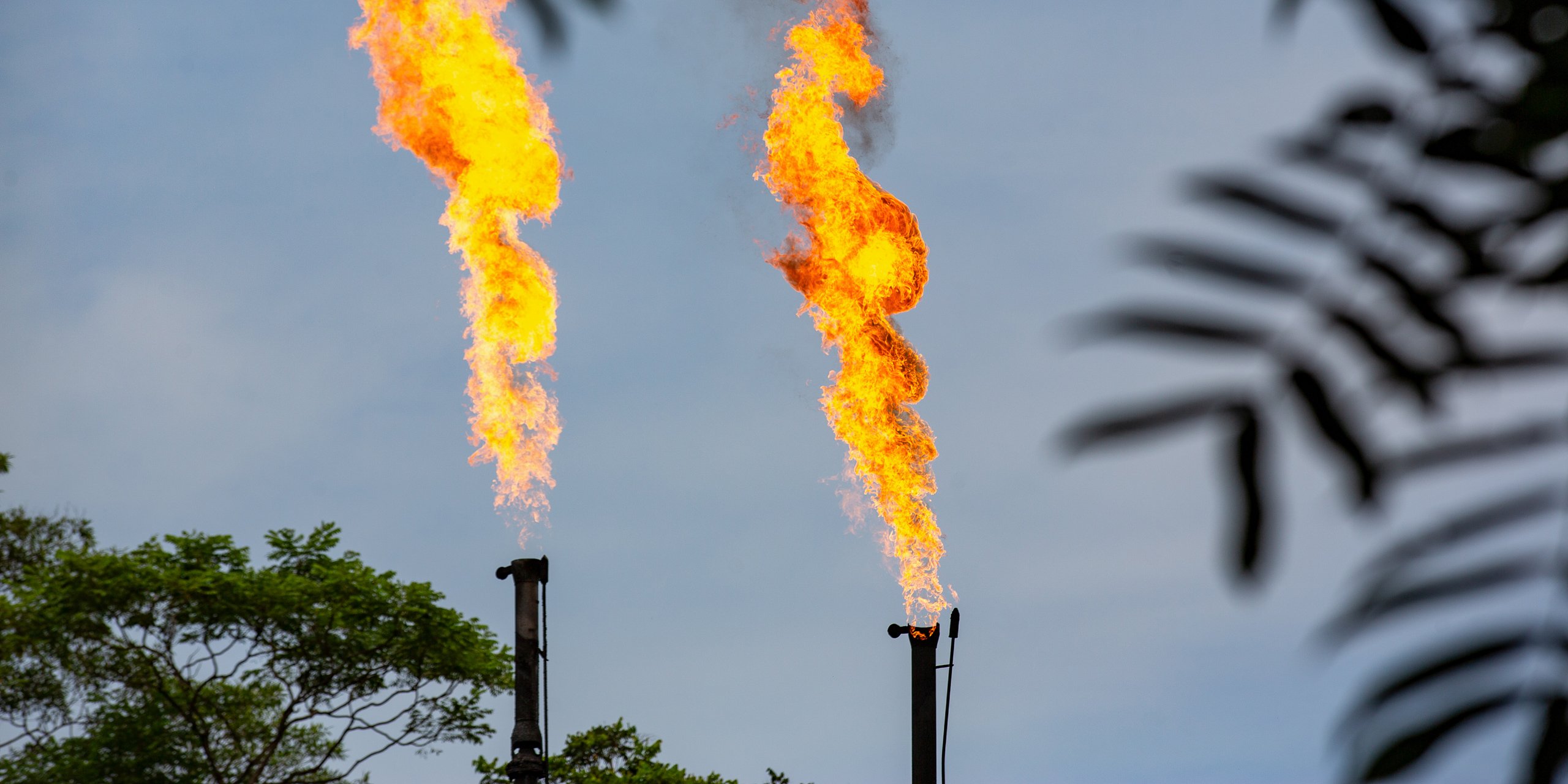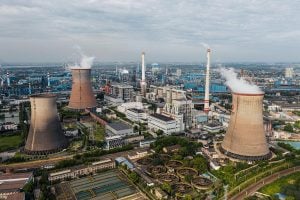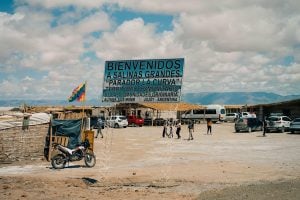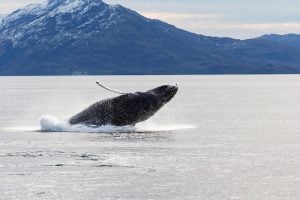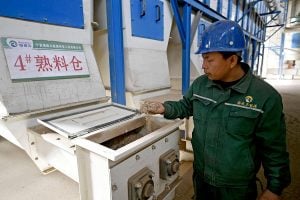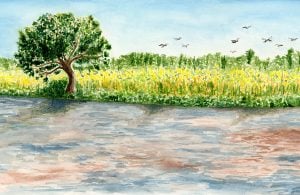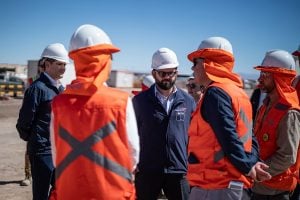Donning a mask and gloves, Donald Moncayo dips his hand into a blackened pool of liquid that lies camouflaged among the vegetation of the Ecuadorian Amazon. “Welcome,” he says, raising an oil-covered hand to the group of visitors gathered around him. “This is how oil pollutes the Amazon.”
Moncayo is leading a so-called “toxitour”, an excursion that reveals the destructive traces left by oil companies over the last 50 years.
This site, located in Shushufindi, one of the cantons of the north-eastern province of Sucumbíos, is the Aguarico 4 well, with Moncayo – a local resident turned tour guide – introducing one of roughly 1,000 pools of oil opened up in the Ecuadorian Amazon by the American company Texaco, following its arrival in the 1960s. Though it has been abandoned since 1986, oil continues to spill into the surrounding area and nearby waters.
Visitors on this tour come from around the world to see another side of the Amazon. The Aguarico 4 well is one of seven stops on the eight-hour tour, which is offered three times a month for a variety of participants, including students, tourists, influencers and scientists. Each tour sees up to 40 attendees transported by bus to contaminated sites in the Amazonian provinces of Orellana and Sucumbíos. Both have been severely affected by the oil industry.
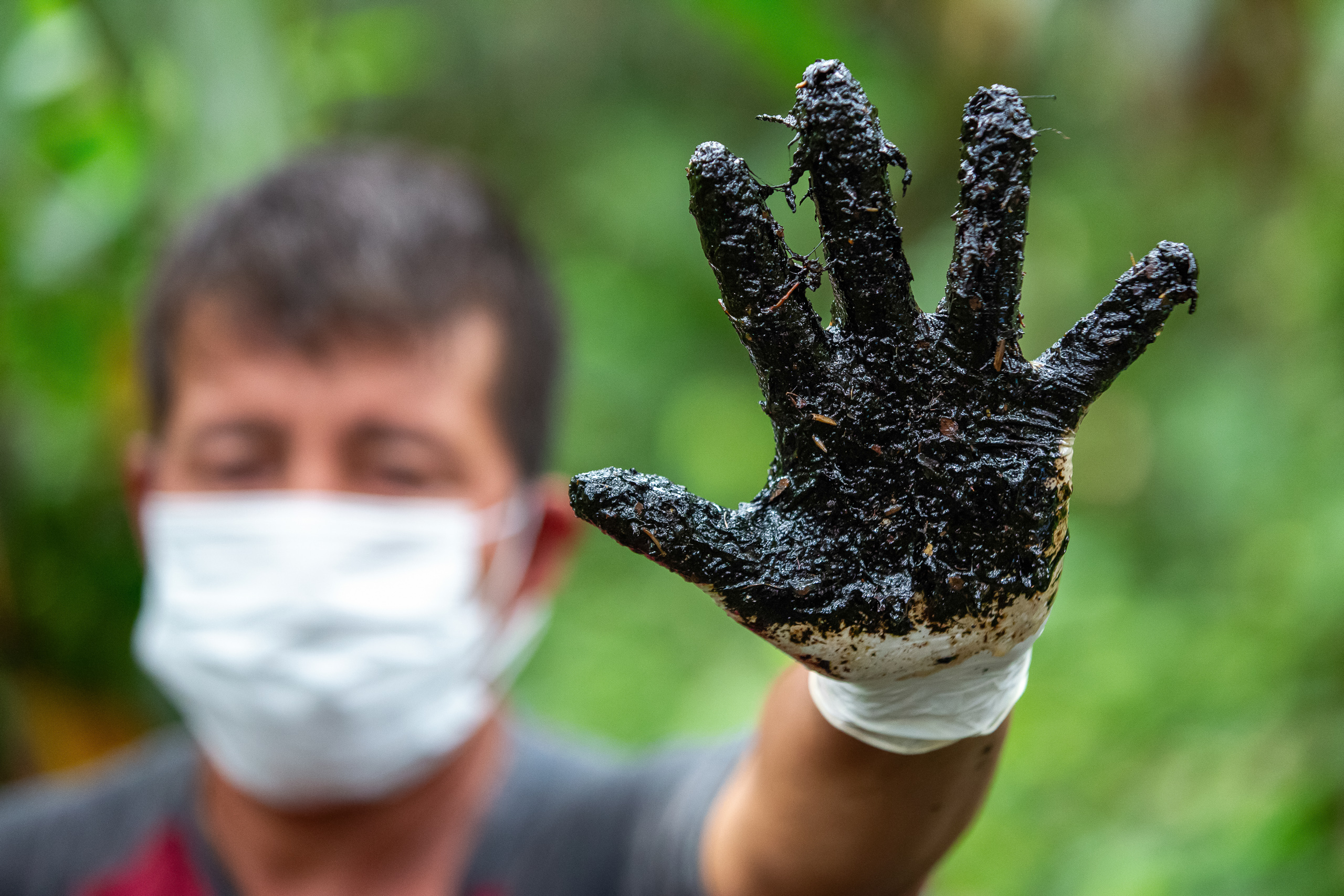
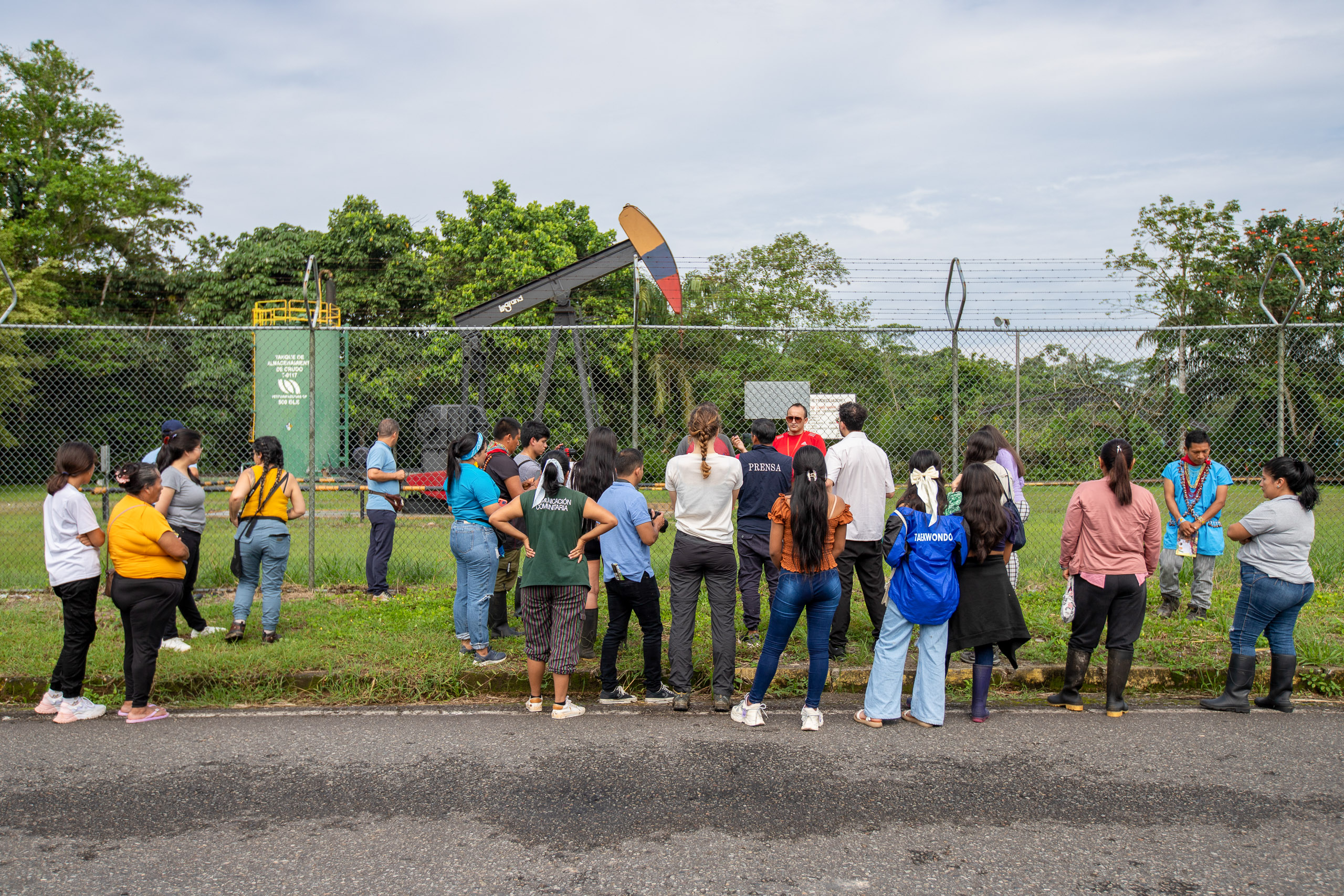
The “toxitours” were launched in 2003 by the Union of People Affected by Texaco (UDAPT), a local community organisation that has sought to highlight the damage caused by Texaco, now part of the Chevron Corporation, during its operations in Ecuador between 1964 and 1990. In the last two decades, new stops have been added that show the diverse, enduring impacts upon Amazonian peoples: houses where crude oil has begun to emerge from the ground, and the homes of cancer patients whose illnesses are linked to consumption of water contaminated by oil.
Today, the tour shows not only the impacts left by Texaco, but also those of the oil companies currently operating in the Amazon, such as PetroEcuador, which has been operating gas flares close to local communities.
But Toxitour guides are also keen to note that their visits offer a warning for the future in the nearby Yasuní National Park – home to the Block 43 oil project, where operations are set to close after a landmark referendum in 2023, which saw Ecuadorians vote to end drilling in what is one of Earth’s most biodiverse places. If adequate remediation measures are not implemented after the project’s closure, they say, a similar fate may await.
Traces of the past
Although the Ecuadorian portion of the Amazon represents only 2% of the entire rainforest, 61% of its area is concessioned to oil companies, according to maps shared with Dialogue Earth by Ecociencia, a biodiversity information NGO. Rodrigo Torres, coordinator of Ecociencia’s Geography Unit, says his analysis of MapBiomas satellite data showed that 17% of the oil blocks intersect with protected areas, protected forests and conservation corridors. The NGO’s maps show that concession blocks are on more than 63% of the Ecuadorian Amazon’s Indigenous territories.
We won the lawsuit, they refuse to pay, they pollute us and now we have to pay themPablo Fajardo, legal advisor to UDAPT
Now aged 65, Ermenegildo Criollo remembers when the oil companies first moved into his territory to extract oil. The leader of the Cofán Indigenous nationality, he says that the people were dispossessed of their land, and their rivers polluted. At the time, not knowing the scale of the contamination, his wife continued to consume this water while pregnant in the late 1970s. Six months after their first son was born, they realised he was not growing as he should have been. They took him to a hospital in Quito, eight hours away, where he sadly died. A second son born three years later died aged three, which Criollo also attributes to his drinking of river water. “He started vomiting non-stop, and the next day at 10am he died,” the leader recalls, adding how there was no hospital in Lago Agrio, the capital of Sucumbíos.
Criollo shares his story from his home, one of the stops of the tour which attendees reach by a short canoe ride. He says that he was one of the 30,000 plaintiffs against Texaco in a process that began in 1993. Some 25 years later, in 2018, Ecuador’s Constitutional Court ruled that the company should pay penalties of USD 9.5 billion.
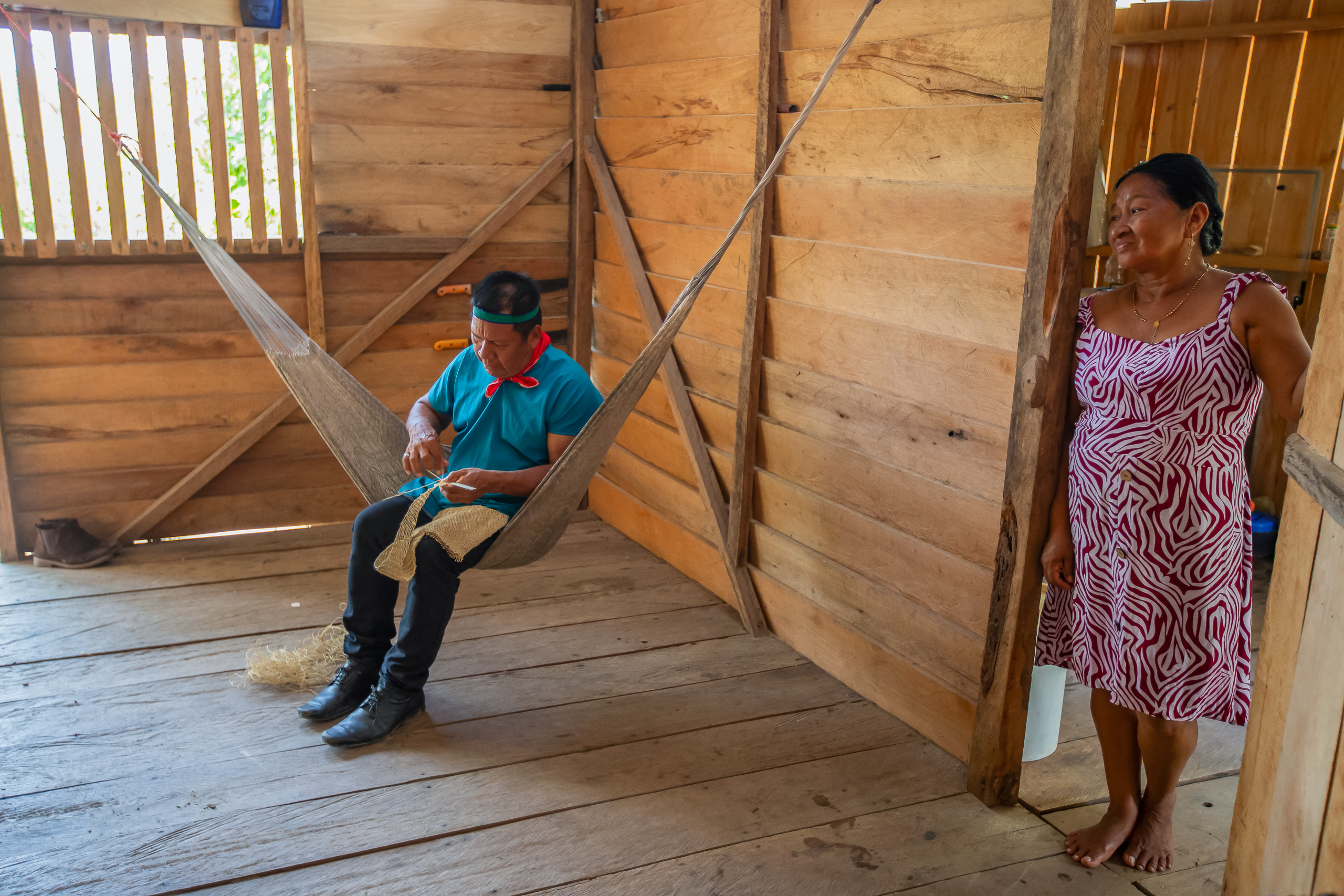
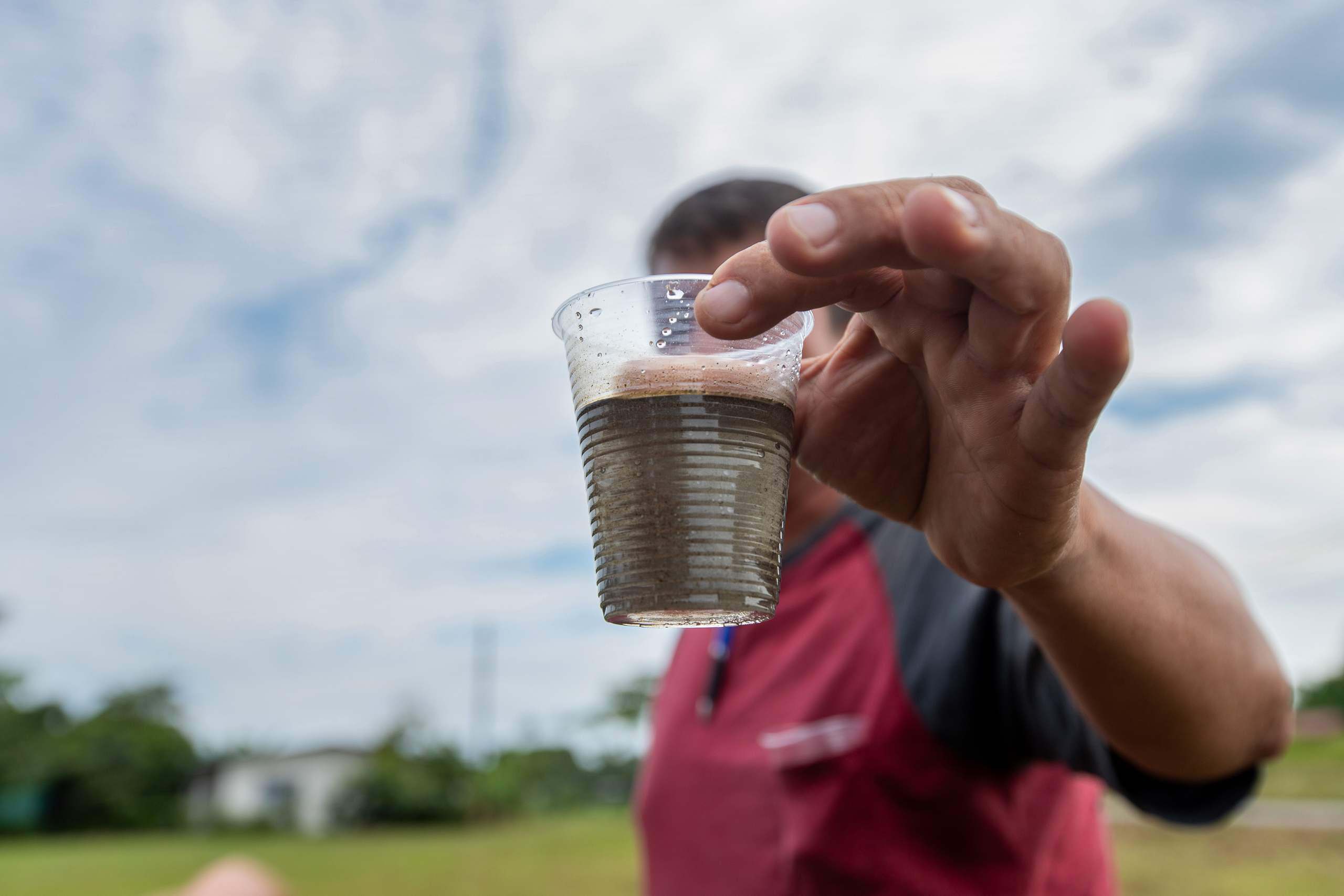
However, Chevron, which bought Texaco in 2001, claimed it had already spent USD 40 million to remediate its impacts. It added that PetroEcuador – the Ecuadorian state-owned company that was part of the consortium operating the oil extraction sites – was responsible for the other damages, having taken over oil operations from Texaco in 1992. In 2018, the Permanent Court of Arbitration (PCA) in The Hague ordered the annulment of the Ecuadorian court’s decision, due to the judgment being obtained through “fraud, bribery and corruption”, and ruled that the state must compensate the company instead. This ruling was upheld in 2020 by a Dutch district court.
UDAPT has indicated they do not accept this verdict. “We won the lawsuit, they refuse to pay, they pollute us and now we have to pay them,” says Pablo Fajardo, legal advisor to UDAPT. He expects the PCA will announce the amount Ecuador should pay Chevron in 2024, but no deadline has been set, and judges have not established the amount to be paid.
UDAPT and Fajardo say they believe this compensation would be USD 2 billion, reporting that they have seen these amounts in the 2023 and 2024 government budgets labelled as “payment for Chevron”. The lawyer believes it is still possible that Ecuador will not have to pay this amount due to article 422 of its constitution, which expresses the country’s sovereignty above cases of international arbitration.
Fajardo believes the Ecuadorian government failed to defend itself before the PCA. “The decision alters Ecuador’s public order. How can an international arbitration go above our constitution? It is inapplicable,” he says. “That argument [of sovereignty] was the most important, but our prosecutor, without any reason, withdrew the argument from the Dutch court and left the state… defenceless.”
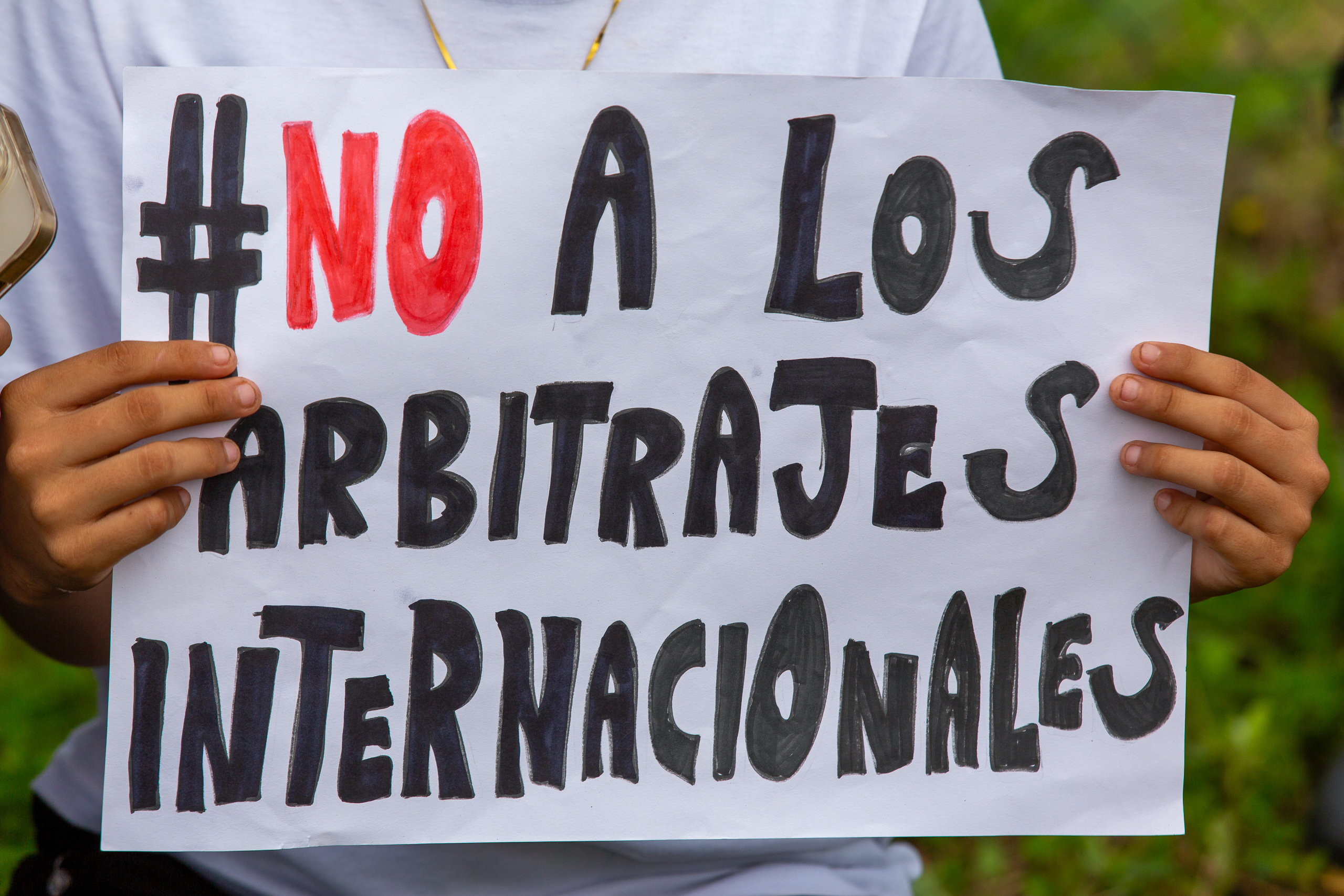
Observers also describe the industry and its companies as having abandoned environmental and human health liabilities, such as the formation of oil pools. When immediate action is not taken after cessation of oil operations, the crude oil infiltrates the soil and groundwater, explains Blanca Ríos, a researcher at aquatic ecology at Ecuador’s University of the Americas (UDLA). In addition, Ríos says abandoned pools attract animals, especially birds, which confuse them with salt licks and come to feed and drink water. They feed on toxic substances and transport them to other areas through excrement. It is also transported through the food chain.
According to data from the Ecuadorian environment ministry’s Environmental and Social Reparation Programme (PRAS) shared with Dialogue Earth, as of June 2022, 4,676 oil pools, pits and spills had been identified in the country’s Amazon. Nearly 40%, or 1,838, had been remediated, while the others are pending. PetroEcuador was approached for comment on the status of these, but at the time of publication no response had been received.
Lessons for Yasuní
For people defending the nearby Yasuní National Park, it is feared that toxitours may be a sign of things to come. In the 2023 referendum, nearly 60% of Ecuadorians voted to stop oil extraction in the park, and the government is expected to order a halt to PetroEcuador’s operations in the protected area within a year of the result. But despite the oil company announcing the closure of the wells by the end of August 2024, “we see that there are no concrete mechanisms for remediation or for the removal of the oil infrastructure”, says Pedro Bermeo, legal coordinator of the Yasunidos collective, an activist group that formed to oppose the Block 43 project. For Bermeo, the toxitour shows what could happen in Block 43 if inadequate measures are taken, citing how the pools and spills continue to affect people and the environment.
He claims that activity in the area has not decreased, and there are no clear signs of oil wells closing. Around 52,000 barrels of oil are extracted daily from Yasuní, according to PetroEcuador. In May, the country’s president, Daniel Noboa, created a committee to establish the guidelines for the planned withdrawal, but did not give deadlines or further details.
In its Preliminary Report on Impacts and Action Plans associated with the closure of operations in the park, PetroEcuador notes that there is no precedent in the country for planning activities on early closure and abandonment. Therefore, in 2023 the state-owned company requested guidance from the Constitutional Court on the technical considerations in establishing the one-year deadline for the closure of the operations, since they had planned a three-year schedule. The court denied the request for not having been submitted on time.
In its report, the company estimates that the cost of abandonment will be USD 654 million, including USD 4 million for the environmental impact study for abandonment and USD 88 million for “revegetation” and reforestation, which it is required to undertake.
Remediation pending
One of the lessons for Yasuní from other oil regions in Ecuador is the importance of proper remediation, in the containment and cleaning of operations’ impacts. Ríos explains that “remediation is not covering with soil. It involves a process of isolating the crude oil and taking it to bioremediation centres”. The effects of this were exemplified during Dialogue Earth’s toxitour, in which reporters visited the home of Efraín Guamán, located above one of the 157 pools remediated by Chevron.
Guamán’s house was built on the site of the Shushufindi 6 well that operated during the 1970s. He has lived there since 2004, but in 2021, while planting green bananas, the 48-year-old was shocked to discover crude oil less than a metre below the surface.
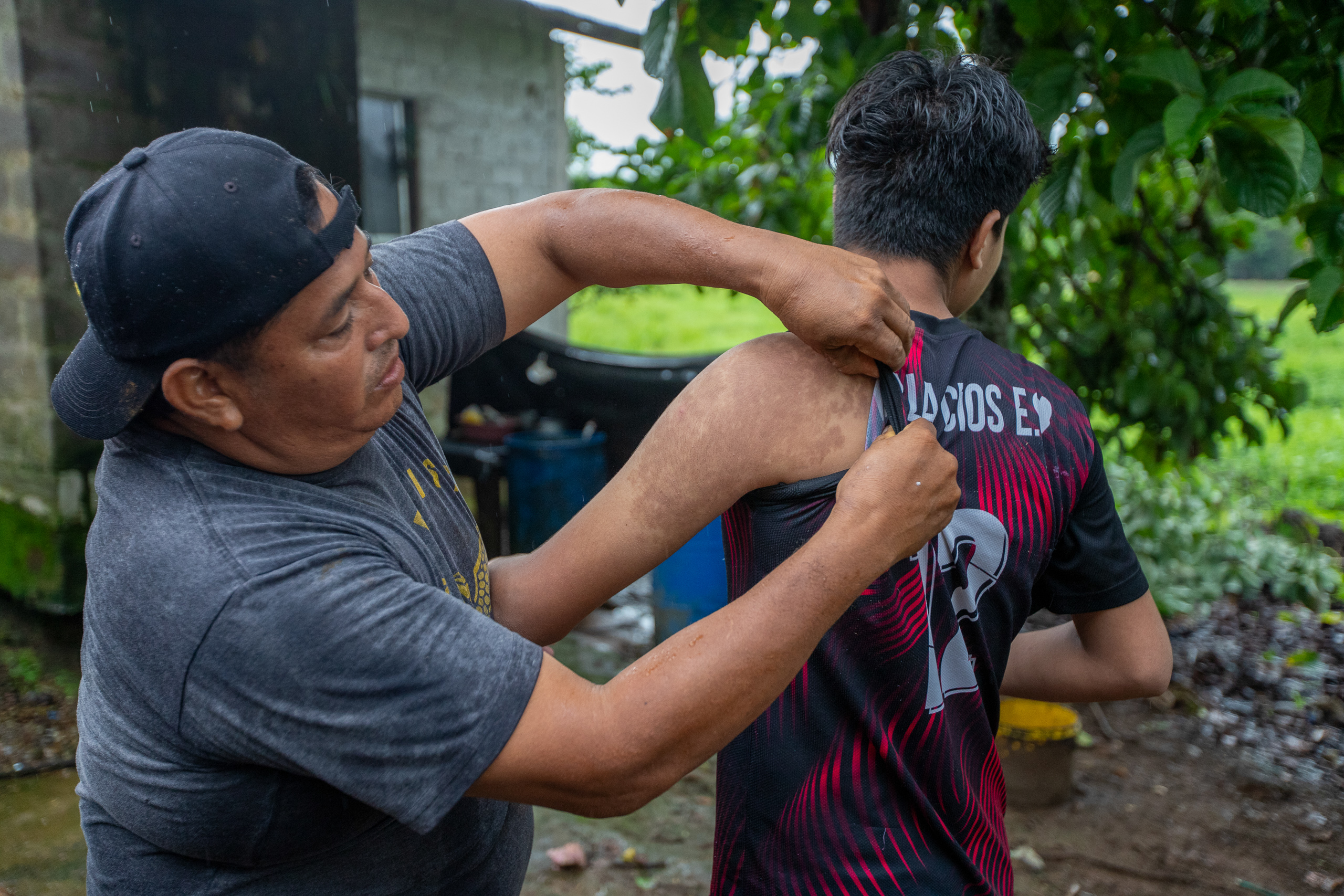
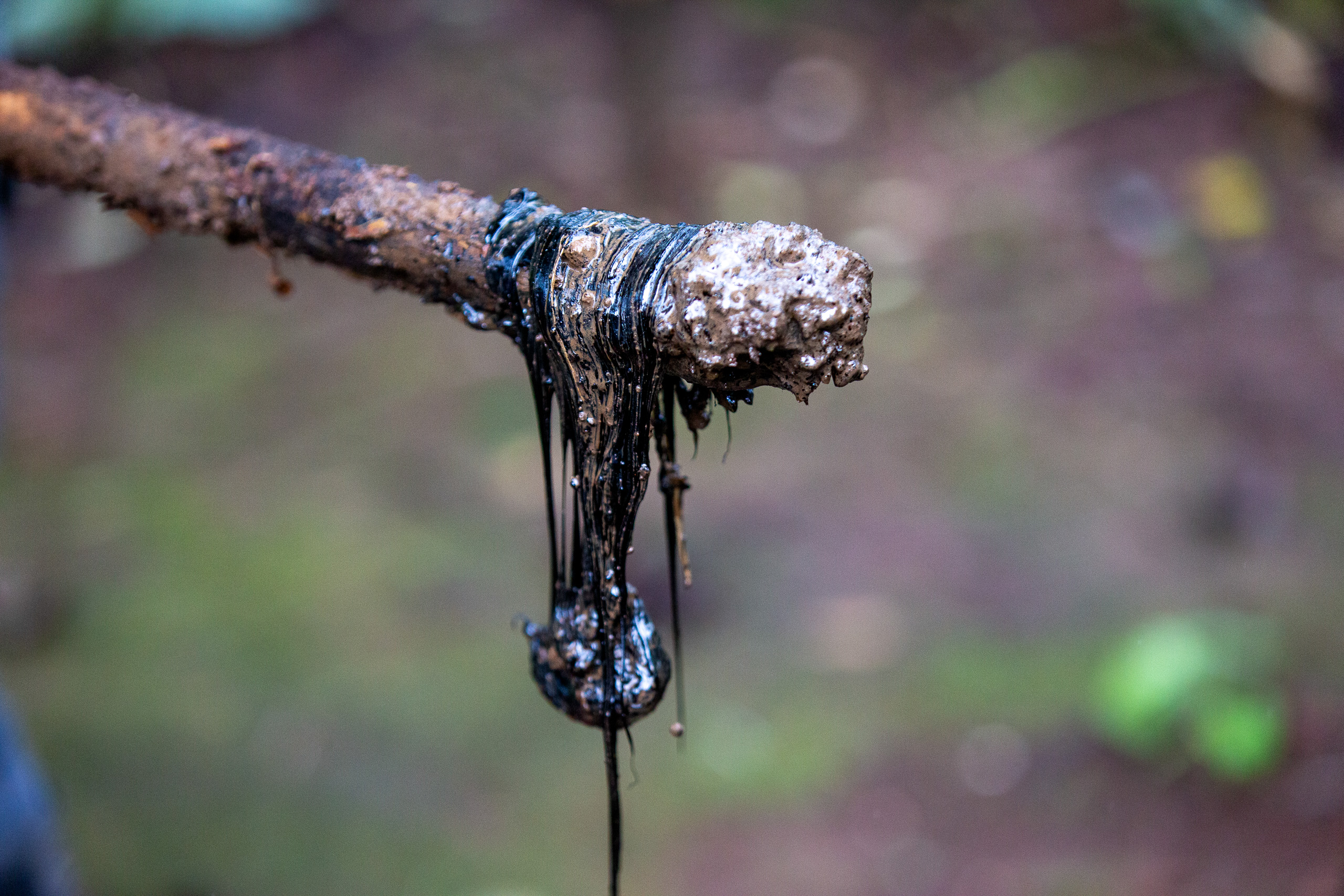
Before this incident, Guamán and his family consumed water from a well and the river located about 150 metres away from his house. In 2006, he lost a kidney, while in 2015 his mother died of skin cancer at the age of 55 – health issues to which exposure to such contamination is said to have contributed. Now his children, aged 3 and 15, have similar lesions on their skin. Though they have potable water now, he says their lesions have continued growing, and they lack money to go to a hospital in the city.
Requests for comment from PetroEcuador on remediation processes went unanswered. The energy ministry was also approached for comment. In response, it said that there is currently no vice-minister of hydrocarbons and no-one available to validate the information.
Mecheros: a pending issue
Oil impacts not just the soil and water sources, but also the air. On arriving in the parish of Enokanki, in Orellana, five flares light up the landscape. Although toxitour attendees were 500 metres away from the flames, they could smell its burning.
Leonela Moncayo, the teenage daughter of tour guide and UDAPT coordinator Donald, accompanies him on the tours. She recognises the smell immediately. From birth until only a year ago, the 13 year old lived with a flare less than 100 metres from her house. During the day, she says she was unable to concentrate on schoolwork because of the noise of the machinery, and at night the perpetual brightness of the flame disrupted her sleep. “If you live in the wild, you think you hear birds and crickets, but you don’t. I just hear a ‘riiiiing’ all the time,” she says.
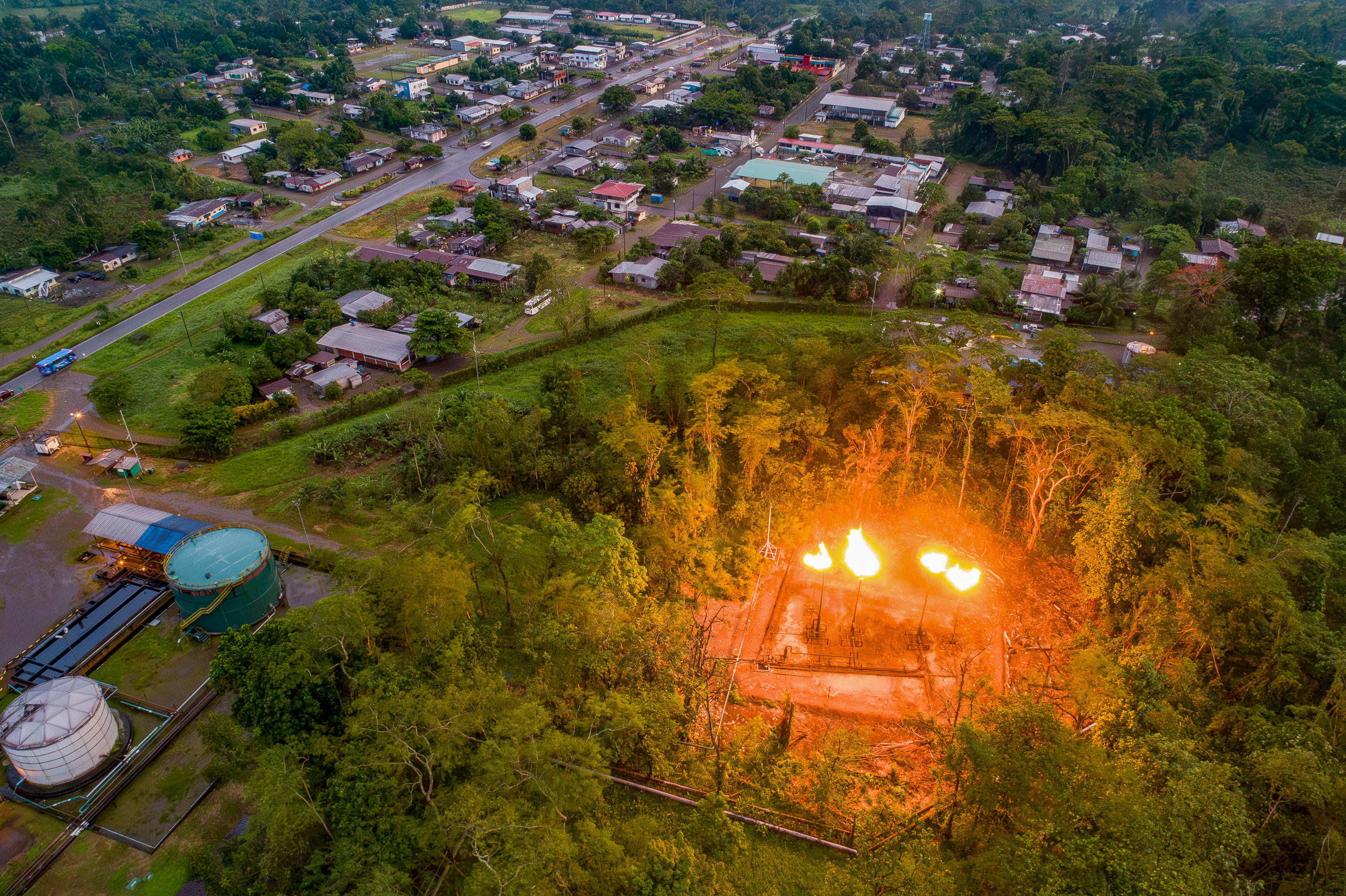

In 2020, Moncayo and eight other girls from the Amazon sued the ministries of energy and of environment for violating their right to a healthy environment. In July 2021, the Provincial Court of Justice of Sucumbíos ruled in favour of the girls. The sentence established that the flares close to the area’s population centres should be eliminated by the end of March 2023, with the rest by December 2030.
However, the number of flares logged by the UDAPT in the area has only increased since then, from 447 in June 2019, when they were preparing for the legal process, to 486 in June 2023. Just before the national assembly convened in May 2024, Marcela Reinoso, former manager of PetroEcuador, said that, up to the first quarter of this year, 145 flares had been extinguished. But minutes later, the minister of the environment, Sade Fritschi, said that only one flare had been extinguished and dismantled, and that they are in talks to regulate all 145.
However, in early June 2024, the then-interim minister of energy, Roberto Luque, attended the national assembly and said that 145 flares have been eliminated, 49 of which were not operational, but require a decommissioning process. He added that the remaining 341 flares would be dismantled before 2030. The continued presence of the flares has concerned specialists and the local population. Flares release gases such as sulphur oxide, nitrogen oxides, methane, propane and benzene into the air. The latter is highly carcinogenic, explains Juan Carlos Avilés, an environmental consultant.
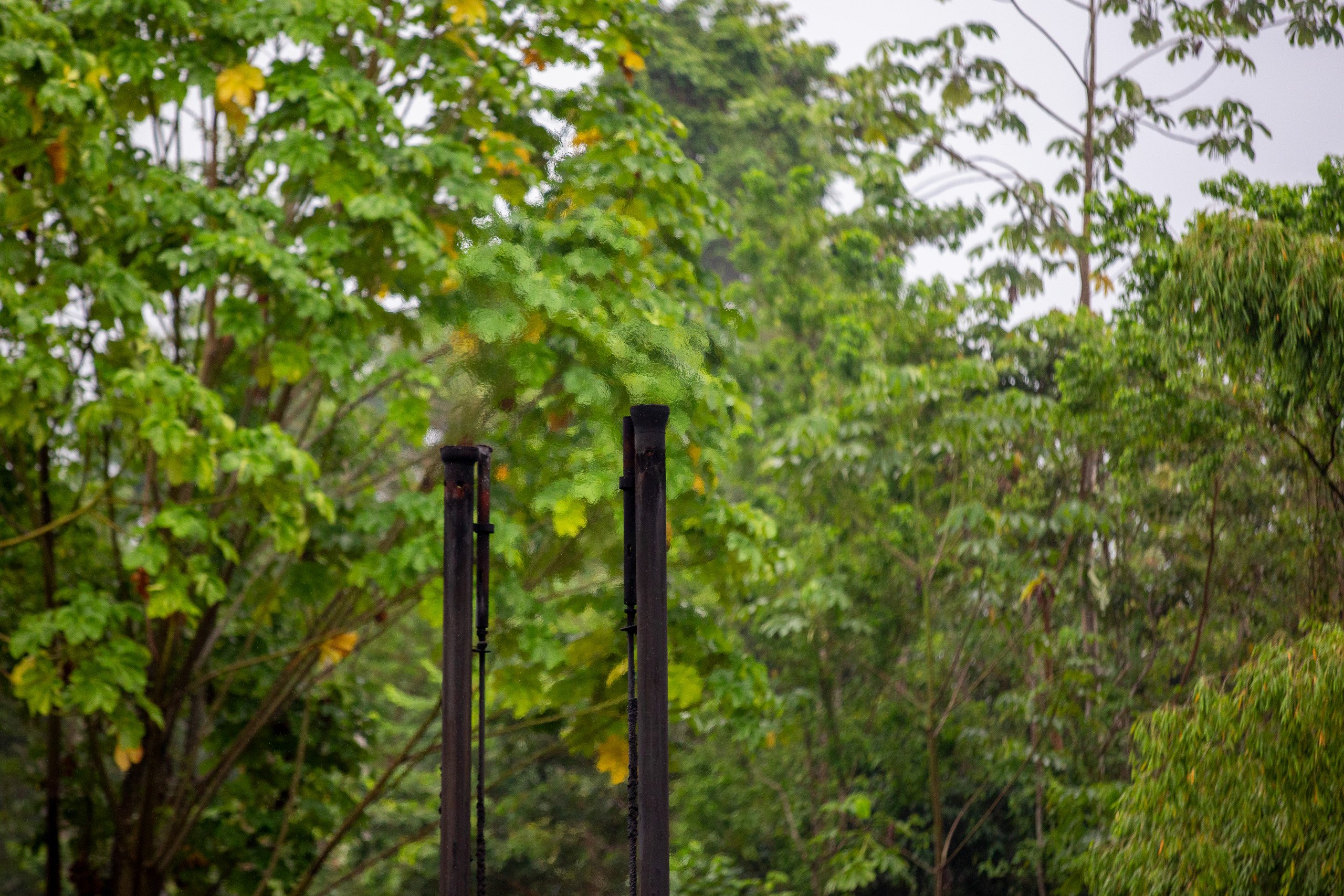
Dannya Bravo, 12, one of the child plaintiffs, lost her father last year to medulloblastoma, a type of brain cancer. She lives with her family in Joya de los Sachas, which she describes as “a town of pure oil”. There are two flares 700 metres from her house and oil pools and pipelines all around it.
Between April 2018 and December 2022, UDAPT and the NGO Clinica Ambiental published a report that documented 442 cases of cancer in the cities of Lago Agrio, Shushufindi, Puerto Francisco de Orellana and Joya de los Sachas. In a February 2024 update to the data, not yet published but shared with Dialogue Earth, the number of patients had reportedly risen to 531 – a 20% increase.
The younger Moncayo says she will continue the fight with her peers until all the flares are eliminated. She talks of her dreams of becoming a dermatologist to treat skin cancer, and plans to build a cancer hospital in the Amazon.
In the meantime, she continues to accompany her father on the tours. “It’s hard to keep up this fight,” her father admits. Having so far only seen the number of sites to visit during the toxitour increase, he says he hopes that the Yasuní National Park will not be added to the list.
